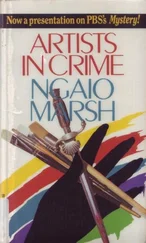Sarah Bolton - Famous European Artists
Здесь есть возможность читать онлайн «Sarah Bolton - Famous European Artists» — ознакомительный отрывок электронной книги совершенно бесплатно, а после прочтения отрывка купить полную версию. В некоторых случаях можно слушать аудио, скачать через торрент в формате fb2 и присутствует краткое содержание. ISBN: , Жанр: foreign_prose, foreign_antique, foreign_language, на английском языке. Описание произведения, (предисловие) а так же отзывы посетителей доступны на портале библиотеки ЛибКат.
- Название:Famous European Artists
- Автор:
- Жанр:
- Год:неизвестен
- ISBN:http://www.gutenberg.org/ebooks/39380
- Рейтинг книги:5 / 5. Голосов: 1
-
Избранное:Добавить в избранное
- Отзывы:
-
Ваша оценка:
- 100
- 1
- 2
- 3
- 4
- 5
Famous European Artists: краткое содержание, описание и аннотация
Предлагаем к чтению аннотацию, описание, краткое содержание или предисловие (зависит от того, что написал сам автор книги «Famous European Artists»). Если вы не нашли необходимую информацию о книге — напишите в комментариях, мы постараемся отыскать её.
Famous European Artists — читать онлайн ознакомительный отрывок
Ниже представлен текст книги, разбитый по страницам. Система сохранения места последней прочитанной страницы, позволяет с удобством читать онлайн бесплатно книгу «Famous European Artists», без необходимости каждый раз заново искать на чём Вы остановились. Поставьте закладку, и сможете в любой момент перейти на страницу, на которой закончили чтение.
Интервал:
Закладка:
"He is chained to the pillar by a band running across the breast, below the shoulders; his powers are just ebbing; the band sustains him; he almost hangs in it; one shoulder is forced up, and towards this the head inclines as it falls backwards. The hand of this arm is placed on his breast; the other is raised in a bent position behind the head, in such an attitude as in sleep we make a pillow of an arm, and it is fettered at the wrist. The knees, drawn closely together, have no more firmness; no muscle is stretched; all has returned to that repose which indicates death."
A year after the Sistine Chapel was finished, Pope Julius died, and was succeeded by Leo X., at whose side the artist had sat when a boy, in the palace of Lorenzo the Magnificent. He was a man of taste and culture, and desired to build a monument to himself in his native Florence. He therefore commissioned Michael Angelo to build a beautiful, sculptured façade for the Church of San Lorenzo, erected by Cosmo de' Medici from designs of Brunelleschi.
For nearly four years the sculptor remained among the mountains of Carrara, and the adjacent ones of Serravezza, taking out heavy blocks of marble, making roads over the steep rocks for their transportation, and studying architecture with great assiduity.
Meantime, Michael Angelo writes to his "Dearest father: Take care of your health, and see whether you are not still able to get your daily bread; and, with God's help, get through, poor but honest. I do not do otherwise; I live shabbily, and care not for outward honor; a thousand cares and works burden me; and thus I have now gone on for fifteen years without having a happy, quiet hour. And I have done all for the sake of supporting you, which you have never acknowledged or believed. God forgive us all! I am ready to go on working as long as I can, and as long as my powers hold out."
Later he hears that his father is ill, and writes anxiously to his brother, "Take care, also, that nothing is lacking in his nursing; for I have exerted myself for him alone, in order that to the last he might have a life free of care. Your wife, too, must take care of him, and attend to his necessities; and all of you, if necessary, must spare no expenses, even if it should cost us everything."
Finally the façade of San Lorenzo was abandoned by Leo X., who decided to erect a new chapel north of the church, for the reception of monuments to his brother and nephew, Giuliano and Lorenzo. The artist built the new sacristy, bringing thither three hundred cart-loads of marble from Carrara.
Leo died in 1521, and was succeeded by Adrian, who lived only a year, and then by Clement VII., the cousin of Leo X. He was a warm friend of Michael Angelo, and so desirous was he of keeping the artist in his service that he endeavored to have him take holy orders, but the offer was refused.
Like the other popes he wished to immortalize his name, and therefore gave the artist the building of the Laurentian library, adjoining San Lorenzo.
Meantime the relatives of Pope Julius were justly angry because his tomb was not completed, and threatened to imprison the sculptor for not fulfilling his contract. All art work was soon discontinued through the sacking of Rome by Charles V. of Germany, in 1527. Upon the inlaid marble floor of the Vatican the German soldiers lighted their fires, and with valuable documents made beds for their horses which stood in the Sistine Chapel. Rome had ninety thousand inhabitants under Leo X. A year after the conquest, she had scarcely a third of that number.
The Florentines now expelled the Medici, revived the republic, and appointed Michael Angelo to superintend the fortifications and defences of Florence. He had always loved liberty. Now he loaned his funds freely to the republic, fortified the hill of San Miniato, was sent to Ferrara by the government to study its fortifications, and also on an embassy to Venice. He showed himself as skilful in engineering as in architecture or painting.
With quick intuition he soon perceived that Malatesta Baglioni, the captain-general of the republic, was a traitor, and, warned that he himself was to be assassinated, he fled to Venice.
Here, in exile, he probably wrote his beautiful sonnets to Dante, whose works he so ardently admired.
"How shall we speak of him? for our blind eyes
Are all unequal to his dazzling rays.
Easier it is to blame his enemies,
Than for the tongue to tell his highest praise.
For us he did explore the realms of woe;
And, at his coming, did high heaven expand
Her lofty gates, to whom his native land
Refused to open hers. Yet shall thou know,
Ungrateful city, in thine own despite,
That thou hast fostered best thy Dante's fame;
For virtue, when oppressed, appears more bright.
And brighter, therefore, shall his glory be,
Suffering of all mankind most wrongfully,
Since in the world there lives no greater name."
Venice offered Michael Angelo all possible inducements to remain, and Francis I. of France eagerly besought the artist to live at his court; but his heart was in Florence, and thither he returned, and bravely helped to defend her to the last. When the Medici were again triumphant, and freedom was dead, the artist being too great a man to imprison or kill, he was publicly pardoned by the pope, and went sadly to his work on the monuments in the Medici Chapel of San Lorenzo.
Here he labored day and night, eating little and sleeping less, ill in body and suffering deeply in heart for his beloved Florence; working into the speaking stone his sorrow and his hopes. In 1534 the Medici Chapel was completed, – a massive piece of architecture, executed at an almost fabulous expense. On one side is the tomb of Giuliano de' Medici, the son of Lorenzo the Magnificent, with his statue in a sitting posture, holding in his hand the bâton of a general. Beneath him, over the tomb, are the statues Day and Night. Opposite is the tomb of Lorenzo de' Medici, the grandson of Lorenzo the Magnificent, and the father of Catherine de' Medici. It is clad in armor, with a helmet overshadowing the grave features. The Italians call it Il Pensiero ("Thought," or "Meditation").
Hawthorne said of this statue, "No such grandeur and majesty have elsewhere been put into human shape. It is all a miracle – the deep repose, and the deep life within it. It is as much a miracle to have achieved this as to make a statue that would rise up and walk… This statue is one of the things which I look at with highest enjoyment, but also with grief and impatience, because I feel that I do not come at all to that which it involves, and that by and by I must go away and leave it forever. How wonderful! To take a block of marble, and convert it wholly into thought, and to do it through all the obstructions and impediments of drapery."
Some authorities believe that the statue usually called Lorenzo was intended for Giuliano. Michael Angelo himself, when remonstrated with because the portraits were not correct likenesses, replied that he "did not suppose people a hundred years later would care much how the dukes looked!"
Under this statue are Dawn and Twilight. Ruskin calls these, with Night and Day, "Four ineffable types, not of darkness nor of day – not of morning nor evening, but of the departure and the resurrection, the twilight and the dawn, of the souls of men."
Day is a gigantic figure of a man; Night, of a woman in a profound sleep, with her foot resting on a thick bundle of poppy-heads. When this statue was exhibited for the first time, Giovanni Batista Strozzi wrote a verse, and attached it to the marble: —
"Carved by an Angel, in this marble white
Sweetly reposing, lo, the Goddess Night!
Calmly she sleeps, and so must living be:
Awake her gently; she will speak to thee."
Интервал:
Закладка:
Похожие книги на «Famous European Artists»
Представляем Вашему вниманию похожие книги на «Famous European Artists» списком для выбора. Мы отобрали схожую по названию и смыслу литературу в надежде предоставить читателям больше вариантов отыскать новые, интересные, ещё непрочитанные произведения.
Обсуждение, отзывы о книге «Famous European Artists» и просто собственные мнения читателей. Оставьте ваши комментарии, напишите, что Вы думаете о произведении, его смысле или главных героях. Укажите что конкретно понравилось, а что нет, и почему Вы так считаете.












